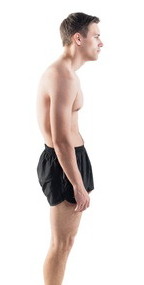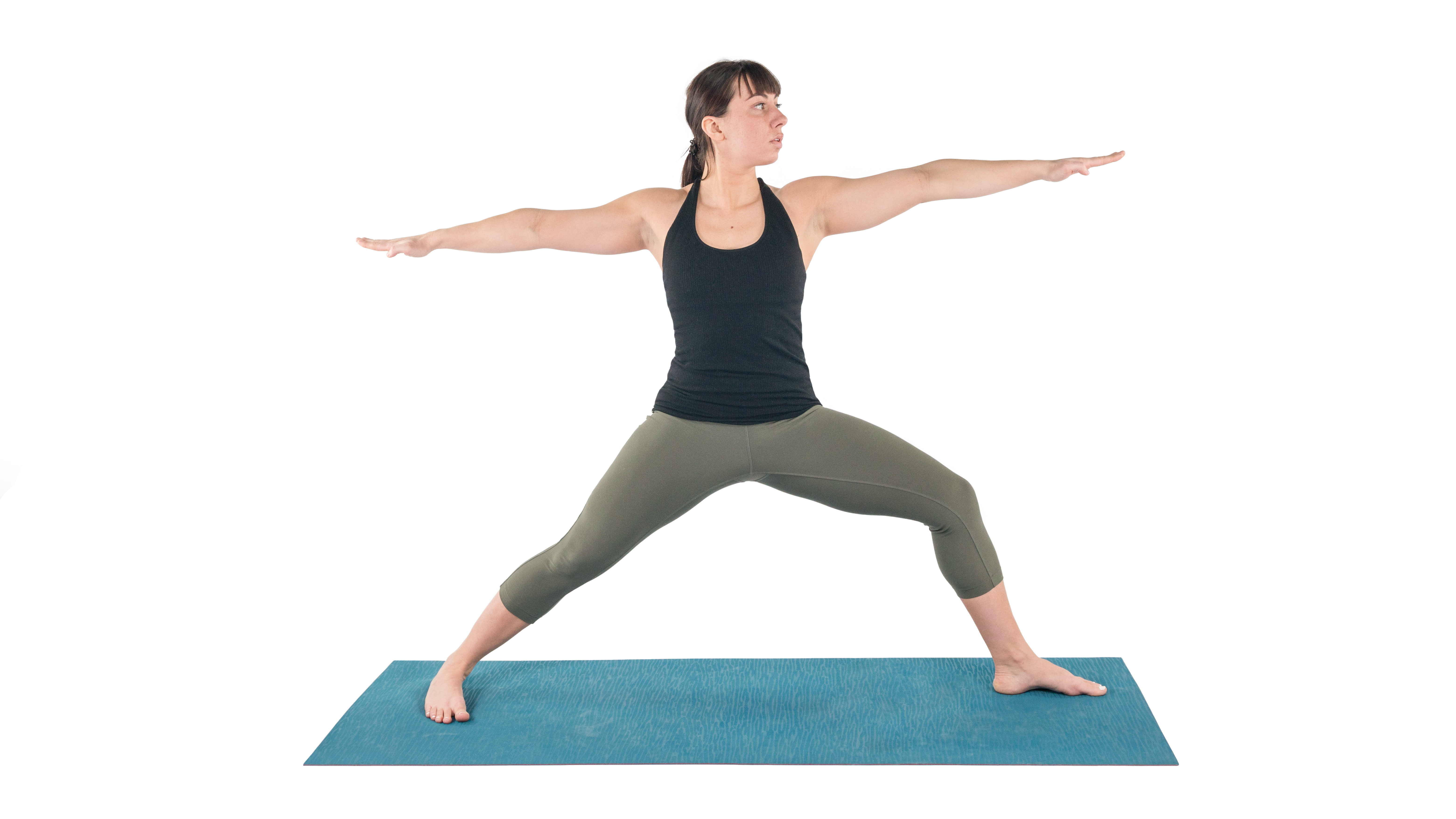View basket (0 items $0.00)
Error message
- Notice: unserialize(): Error at offset 5 of 154 bytes in variable_initialize() (line 1202 of /home/dh_6hcdc2/yogau.online/docroot/includes/bootstrap.inc).
- The file could not be created.
- The file could not be created.

Posture and Personality: How Changing Your Posture Can Change Your Perspective
We like to blame our posture on our genetics, on job stress, or long hours spent at the computer. But did you know that our posture can be primarily determined by our personality?
Our posture, facial expressions, and movements communicate the way we feel inside, whether we like it or not. We call this silent, usually involuntary communication body language. And interestingly, our subconscious use of body language isn’t limited to communication with other people. Our emotional state is constantly being conveyed through our posture and the way we move, even if we are alone, and no one can see us.
Personality and Habitual Posture
Our posture can convey our emotional state, but can we predict what habitual posture a person will develop based on their personality? It appears that to some degree, the answer is yes. In a study comparing personality and posture, researchers from McGill University and the San Diego University for Integrative Studies found striking correlations between posture and extroverted versus introverted personality traits.
The researchers separated their test subjects into groups based on four different habitual postures: 
-
Ideal posture
-
Kyphosis-lordosis posture (in which the kyphotic and lordotic curves of the spine are exaggerated)
-
Swayback (in which the lumbar curve of the spine is decreased, and the hips are in front of the ankles)
-
Flatback (in which the lumbar portion of the spine is flat)
The study showed that 96 percent of the subjects who had ideal posture and 83 percent of the subjects who had kyphosis-lordosis posture were extroverts.
The introverts, on the other hand, were far more likely to stand with either a sway back or flat back.
These results are quite remarkable, especially when you look at the position of the lower back and pelvis in these postures. The extroverts tended to hold their pelvis upright or tipped forward, resulting in a natural or enhanced arch in their lower back. In other words, the people who were more confident and outgoing had adopted the powerful posture of the “action response.”
In contrast, the introverts had a strong tendency to contract their abdominal muscles and tuck their pelvis under—the submissive posture of the “withdrawal response”—creating a flattening of the natural lumbar curve and bringing them into flat back or swayback posture.
The study also found that the muscles of people who had ideal posture were more relaxed, and the muscles of those who had the three non-ideal postures were more contracted. This is not surprising because our muscles have to work to keep us in an unnatural posture. Predictably, the people who had the three non-ideal postures also experienced more back and neck pain than those who had ideal posture.
Power Posing 
Like any muscular pattern, we can change our posture through intentional practice and repetition. And by changing our posture, we can change the way we feel inside.
Amy Cuddy of Harvard University and Dana Carney and Andy Yap of Columbia University tested the effects of what they call “power posing,” and the results of their research have fascinating, real-world applications. In their study, test subjects had to spend two minutes sitting in high-power poses or low-power poses.
High-power poses were expansive and open, meaning that the subject expanded their body to take up more space and brought their limbs away from the center of their body. Subjects in low-power poses took up less space and brought their limbs in closer to the center of their body. The action response triggers high-power poses, and the withdrawal response brings us into low-power poses.
The study measured levels of cortisol and testosterone before and after power posing. Levels of the stress hormone cortisol are typically higher in people who feel powerless, and lower in those who feel powerful. The steroid hormone testosterone is linked to assertiveness, and people with high levels of testosterone typically feel powerful and act confidently.
The effects of spending just two minutes in either high-power or low-power poses yielded significant results. The high-power posers experienced a spike in testosterone levels and a drop in cortisol levels, while the low-power posers experienced a drop in testosterone and a rise in cortisol. These hormonal changes were accompanied by emotional shifts; the high-power posers reported feeling more powerful and were more likely to take a gambling risk after striking their poses than the low-power posers.
Incredibly, spending just two minutes in a posture has immediate effects on the way we feel, our behavior, and even our hormone levels. Imagine the effects of spending a lifetime in a certain posture.
So What Does This Mean?
Our personality—the unique combination of emotional and behavioral characteristics that make us who we are—causes us to adopt certain postures. On the flip side, our posture affects the way we feel inside and how we behave, especially once the posture has become deeply learned, and we are stuck in it all the time.
Our personality and our learned muscular patterns work in tandem to keep us stuck in habitual ways of standing, moving, feeling, and acting. And unfortunately, these patterns lead to increased muscle tension and sometimes pain and actual physical damage to our body.
Can We Change Our Habitual Posture?
In most cases, yes. Like any learned muscular pattern, posture can be changed through a gradual process of retraining the nervous system. 
Consider how your personality and emotions may have contributed to your habitual posture. Also, start noticing when certain postural patterns are triggered and how they affect you.
For example, do you notice that when you feel powerless, tired, or stressed that you slouch, letting your chest collapse and shoulders round? Does this create strain in your neck, shoulders, or lower back? Noticing patterns like this will help you to become more aware of how your personality, emotions, and posture affect each other, and how they may be putting you in pain.
If you’re serious about changing your posture, I recommend learning Clinical Somatics exercises. Clinical Somatics works directly with your nervous system to retrain learned muscular patterns, allowing you to improve your posture and movement, release chronic muscle tension, relieve pain, and prevent and recover from injuries.
How You Can Improve Your Posture
In addition to practicing Clinical Somatics exercises, here are some other things you can do to improve your posture:
-
Have a friend take a photo of you from the side. Stand normally and don’t try to have perfect posture. Looking at a photo instead of at your reflection in the mirror will help you see your posture more objectively. Be aware of the muscle tension pulling you into your habitual posture. Are your tight lower back muscles causing you to arch your back? Are your chest and abdominal muscles contracted, pulling your head forward and flattening your lower back?
-
Start noticing if the way you’re feeling causes you to sit or stand in certain ways. Do you stand up straight or arch your back when you feel confident? Do you slouch when you feel timid or don’t want to be the center of attention?
-
Focus on your posture during your workouts. Exercise offers the perfect opportunity to concentrate on your form with no distractions, such as phone calls, emails, or personal interactions.
-
Set a timer on your phone to go off every ten minutes throughout the day. When it goes off, check-in with yourself, and notice how you’re sitting or standing. Correct your posture if needed, and see how long you can stay in that ideal posture.
Also, read Stand Tall: 10 Ways That Posture Affects Your Health from Sarah St. Pierre and YogaUOnline.
Study spine health with YogaUOnline and Tias Little: The Spine as a Sacred Channel - Creating a Body of Light, Vitality, and Energy.
Reprinted with permission from Somatic Movement Center.
 Sarah Warren St. Pierre is a Certified Clinical Somatic Educator and the author of the book Why We’re In Pain. She was trained and certified at Somatic Systems Institute in Northampton, MA. Sarah has helped people with chronic muscle, and joint pain, sciatica, scoliosis, and other musculoskeletal conditions become pain-free by practicing Thomas Hanna’s groundbreaking method of Clinical Somatic Education. Sarah is passionate about empowering people to relieve their pain, improve their posture and movement, and prevent recurring injuries and physical degeneration.
Sarah Warren St. Pierre is a Certified Clinical Somatic Educator and the author of the book Why We’re In Pain. She was trained and certified at Somatic Systems Institute in Northampton, MA. Sarah has helped people with chronic muscle, and joint pain, sciatica, scoliosis, and other musculoskeletal conditions become pain-free by practicing Thomas Hanna’s groundbreaking method of Clinical Somatic Education. Sarah is passionate about empowering people to relieve their pain, improve their posture and movement, and prevent recurring injuries and physical degeneration.
Sources:
Carney, D.R.; Cuddy, A.J.C.; & Yap, A.J. (2010, October). Power Posing: Brief Nonverbal Displays Affect Neuroendocrine Levels and Risk Tolerance. Psychological Science, 21(10), 1363-1368.
Guimond, S. & Massrieh, W. (2012, May 18). Intricate Correlation between Body Posture, Personality Trait, and Incidence of Body Pain: A Cross-Referential Study Report. PloS ONE, 7(5), e37450. doi:10.1371/journal.pone/0037450
Featured Courses








